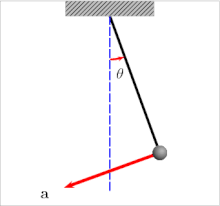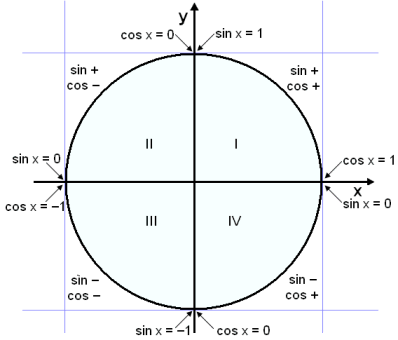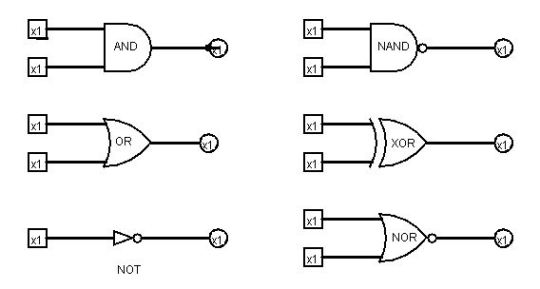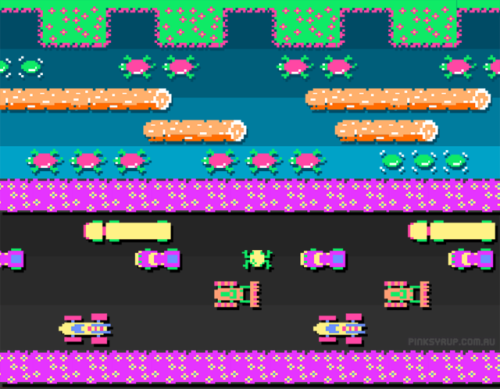#vectors
One of the greatest questions of all time, has to be “whatIStime?”.
Is time defined by what we see on our mechanical clocks? Does time stop? Does time have a constant speed? Does time have a beginning and end? There are countless questions we can ask about time but what are the answers?
We are all familiar with time, our whole lives revolve around it. Yet, we don’t know everything there is to know about it. We can start by measuring time.
Hours, minutes and seconds were first adopted by the Babylonians, some say they even invented time. However, they could have never actually invented time but they made a system for time. The days were 12 hours and the nights 12 hours. The hours were broken down into 60 minutes and those that needed even more precise numbers, they broke down those 60 minutes into 60 equally big parts (60*60=3600 seconds).
To measure the time they used the human heart-beat, one second was the duration of time between the two heart-beats of a healthy human (in a relaxed state).
The first mechanical clocks were invented in the 1200s. They had a pendulum that swung back and forth. There are different types of clocks and therefor the clocks we use in our everyday lives are referred to as mechanical clocks. Biological clocks are quite important to us, the heart-beat is an example of a biological clock and even a woman’s menstrual cycle is a biological clock (probably not the kind of clock you’d want to watch).
Today we also use atomic clocks, they’re so precise that they will either speed up or slow down by one second in a million years. They’re based on specific type of radiation from the Cesium atom. The Second is now defined by this radiation and perhaps in some years we’ll invent even better clocks with yet another definition of time. However by current definition, a second is the duration 9,192,631,770 cycles of radiation in a transition, or energy level change, of the Cesium atom.

Picture above: A pendulum showing the acceleration (a) and velocity (v) vectors.
Is time a vector or scalar quantity?
Firstly, scalars are quantities that are fully described by a magnitude alone (Time and Mass) Vectors are quantities that are fully described by both a magnitude and a direction (Velocity and Force).
Time is said not to have any direction, only magnitude. Therefor it is a scalar quantity.
Another question that tends to puzzle humanity is about space and it’s length. Is space endless? Has it always existed? Is space just the distance between two objects or is it something more? If you took away ever last atom and object, would there still be space or would there be nothing? Even then you can ask, what IS nothing? Does ‘nothing’ exist?
One thing is for sure, we can measure length. There are many different measurements for length all over the world; Feet, yards, centimeters, etc. However the result is always the same, no matter how you measure. The distance that is there, is there and will not change no matter which measurement you decide to use. However, the international measurement tends to be in meters. The meter is defined by the movement of light.
A meteris the length of light moving in free space during a time interval of 1/299 792 458 of a second.
Why do we use light to define certain measurements? The light speed in a vacuum is the same no matter when or where we measure and it doesn’t even matter if the light source is moving relative to us.
It’s extremely hard to be 100% precise when talking about length and all length measurements are a little uncertain. Your height for example, let’s say your height is 162 cm. That means you’re between 161,5 cm and 162,5 cm. However, we’re getting better and better at being even more precise and inventing new measurements that will help us in the future.
Sources:
http://www.physicsclassroom.com/class/1dkin/u1l1b.cfm
Physics book: H.Aschehough @ Co. [W. Nygaard] 2007
One of my favourite characters from #kiboland project Always there to give you some wise advice ⚡
.
#characterdesign #characterconcept #visdev #digitalart #vectors #zinkase
https://www.instagram.com/p/CGndFAKjZvp/?igshid=ywgg7x9q81hf
Post link
One of my favourite characters from #kiboland project Always there to give you some wise advice ⚡
.
#characterdesign #characterconcept #visdev #digitalart #vectors #zinkase
https://www.instagram.com/p/CGnc0WJDb4V/?igshid=1xeogpu0ak5nq
Post link
Don’t be indifferent
.
#characterdesign #trafficcone #robot #graffiti #streetart #vectors #kiboland #choose #zinkase
https://www.instagram.com/p/CGQAu_IjEoD/?igshid=1cssnje4xiryo
Post link
Kilê Limbo version ready to explore ethereal landscapes
.
#kiboland #mask #visdev #characterdesign #vectors #instaart #zinkase
https://www.instagram.com/p/CGDKyc0DyoF/?igshid=1sfdzesdosync
Post link
Kilê Limbo version ready to explore ethereal landscapes
.
#kiboland #mask #visdev #characterdesign #vectors #instaart #zinkase
https://www.instagram.com/p/CGDKtrgjsuP/?igshid=p67fd4wx30ma
Post link
Meet Kilê from #kiboland project!
.
#ilpiaceredinonfareniente #illustration #digitalart #vectors #chill #visdev #zinkase
https://www.instagram.com/p/CF-F2StjARL/?igshid=sz39pezuksn7
Post link
042 Planned obsolescence
.
#BMO #adventuretime #fanart #Plannedobsolescence #vectors #illustration #zinkase
https://www.instagram.com/p/Bt9A9AoFKzA/?utm_source=ig_tumblr_share&igshid=1jilxoya79zvn
Post link
Beyond the Enlightenment Rationalists:
From imaginary to probable numbers - III

(continued from here)
My objection to the imaginary dimension is not that we cannot see it. Our senses cannot identify probable dimensions either, at least not in the visually compelling manner they can the three Cartesian dimensions. The question here is not whether imaginary numbers are mathematically true. How could they not be? The cards were stacked in their favor. They were defined in such a manner, – consistently and based on axioms long accepted valid, – that they are necessarily mathematically true. There’s a word for that sort of thing. –The word is tautological.– No, the decisive question is whether imaginary numbers apply to the real world; whether they are scientifically true, and whether physicists can truly rely on them to give empirically verifiable results with maps that accurately reproduce mechanisms actually used in nature.[1]
The geometric interpretation of imaginary numbers was established as a belief system using the Cartesian line extending from -1,0,0 through the origin 0,0,0 to 1,0,0 as the sole real axis left standing in the complex plane. In 1843, William Rowan Hamilton introduced two additional axes in a quaternion coordinate system. The new jandk axes, similar to the i axis, encode coordinates of imaginary dimensions. So the complex plane has one real axis, one imaginary; the quaternion system, three imaginary axes, one real, to accomplish which though involved loss of commutative multiplication. The mandalic coordinate system has three real axes upon which are superimposed six probable axes. It is both fully commensurate with the Cartesian system of real numbers and fully commutative for all operations throughout all dimensions as well.[2]
All of these coordinate systems have a central origin point which all other points use as a locus of reference to allow clarity and consistency in determination of location. The mandalic coordinate system is unique in that this point of origin is not a null point of emptiness as in all the other locative systems, but a point of effulgence. In that location where occur Descartes’ triple zero triad (0.0.0) and the complex plane’s real zero plus imaginary zero (ax=0,bi=0), we find eight related hexagrams, all having neutral charge density, each of these consisting of inverse trigrams with corresponding Lines of opposite charge, canceling one another out. These eight hexagrams are the only hexagrams out of sixty-four total possessing both of these characteristics.[3]

So let’s begin now to plot the points of the mandalic coordinate system with the view of comparing its dimensions and points with those of the complex plane.[4] The eight centrally located hexagrams all refer to and are commensurate with the Cartesian triad (0,0,0). In a sense they can be considered eight alternative possible states which can exist in this locale at different times. These are hybrid forms of the four complementary pair of hexagrams found at antipodal vertices of the mandalic cube. The eight vertex hexagrams are those with upper and lower trigrams identical. This can occur nowhere else in the mandalic cube because there are only eight trigrams.[5]

From the origin multiple probability waves of dimension radiate out toward the central points of the faces of the cube, where these divergent force fields rendezvous and interact with reciprocal forces returning from the eight vertices at the periphery. converging toward the origin. Each of these points at the six face centers are common intersections of another eight particulate states or force fields analogous to the origin point except that four originate within this basic mandalic module and four without in an adjacent tangential module. Each of the six face centers then is host to four internal resident hexagrams which share the point in some manner, time-sharing or other. The end result is the same regardless, probabilistic expression of characteristic form and function. There is a possibility that this distribution of points and vectors could be or give rise to a geometric interpretation of the Schrödinger equation, the fundamental equation of physics for describing quantum mechanical behavior. Okay, that’s clearly a wild claim, but in the event you were dozing off you should now be fully awake and paying attention.
The vectors connecting centers of opposite faces of an ordinary cube through the cube center or origin of the Cartesian coordinate system are at 180° to each other forming the three axes of the system corresponding to the number of dimensions. The mandalic cube has 24 such axes, eight of which accompany each Cartesian axis thereby shaping a hybrid 6D/3D coordinate system. Each face center then hosts internally four hexagrams formed by hybridization of trigrams in opposite vertices of diagonals of that cube face, taking one trigram (upper or lower) from one vertex and the other trigram (lower or upper) from the other vertex. This means that a face of the mandalic cube has eight diagonals, all intersecting at the face center, whereas a face of the ordinary cube has only two.[6]

The circle in the center of this figure is intended to indicate that the two pairs of antipodal hexagrams at this central point of the cube face rotate through 90° four times consecutively to complete a 360° revolution. But I am describing the situation here in terms of revolution only to show an analogy to imaginary numbers. The actual mechanisms involved can be better characterized as inversions (reflections through a point), and the bottom line here is that for each diagonal of a square, the corresponding mandalic square has a possibility of 4 diagonals; for each diagonal of a cube, the corresponding mandalic cube has a possibility of 8 diagonals. For computer science, such a multiplicity of possibilities offers a greater number of logic gates in the same computing space and the prospect of achieving quantum computing sooner than would be otherwise likely.[7]
Similarly, the twelve edge centers of the ordinary cube host a single Cartesian point, but the superposed mandalic cube hosts two hexagrams at the same point. These two hexagrams are always inverse hybrids of the two vertex hexagrams of the particular edge. For example, the edge with vertices WIND over WIND and HEAVEN over HEAVEN has as the two hybrid hexagrams at the center point of the edge WIND over HEAVEN and HEAVEN over WIND. Since the two vertices of concern here connect with one another via the horizontal x-dimension, the two hybrids differ from the parents and one another only in Lines 1 and 4 which correspond to this dimension. The other four Lines encode the y- amd z-dimensions, therefore remain unchanged during all transformations undergone in the case illustrated here.[8]

This post began as a description of the structure of the mandalic coordinate system and how it differs from those of the complex plane and quaternions. In the composition, it became also a passable introduction to the method of composite dimension. Additional references to the way composite dimension works can be found scattered throughout this blog and Hexagramium Organum. Basically the resulting construction can be thought of as a tensegrity structure, the integrity of which is maintained by opposing forces in equilibrium throughout, which operate continually and never fail, a feat only nature is capable of. We are though permitted to map the process if we can manage to get past our obsession with and addiction to the imaginary and complex numbers and quaternions.[9]
In our next session we’ll flesh out probable dimension a bit more with some illustrative examples. And possibly try putting some lipstick on that PIG (Presumably Imaginary Garbage) to see if it helps any.
(continuedhere)
Image: A drawing of the first four dimensions. On the left is zero dimensions (a point) and on the right is four dimensions (A tesseract). There is an axis and labels on the right and which level of dimensions it is on the bottom. The arrows alongside the shapes indicate the direction of extrusion. By NerdBoy1392 (Own work) [CC BY-SA 3.0orGFDL],via Wikimedia Commons
Notes
[1] For more on this theme, regarding quaternions, see Footnote [1] here. My own view is that imaginary numbers, complex plane and quaternions are artificial devices, invented by rational man, and not found in nature. Though having limited practical use in representation of rotations in ordinary space they have no legitimate application to quantum spaces, nor do they have any substantive or requisite relation to square root, beyond their fortuitous origin in the Rationalists’ dissection and codification of square root historically, but that part of the saga was thoroughly misguided. We wuz bamboozled. Why persist in this folly? Look carefully without preconception and you’ll see this emperor’s finery is wanting. It is not imperative to use imaginary numbers to represent rotation in a plane. There are other, better ways to achieve the same. One would be to use sin and cos functions of trigonometry which periodically repeat every 360°. (Read more about trigonometric functions here.) Another approach would be to use polar coordinates.

[SOURCE]
A quaternion, on the other hand, is a four-element vector composed of a single real element and three complex elements. It can be used to encode any rotation in a 3D coordinate system. There are other ways to accomplish the same, but the quaternion approach offers some advantages over these. For our purposes here what needs to be understood is that mandalic coordinates encode a hybrid 6D/3D discretized space. Quaternions are applicable only to continuous three-dimensional space. Ultimately, the two reside in different worlds and can’t be validly compared. The important point here is that each has its own appropriate domain of judicious application. Quaternions can be usefully and appropriately applied to rotations in ordinary three-dimensional space, but not to locations or changes of location in quantum space. For description of such discrete spaces, mandalic coordinates are more appropriate, and their mechanism of action isn’t rotation but inversion (reflection through a point.) Only we’re not speaking here about inversion in Euclidean space, which is continuous, but in discrete space, a kind of quasi-Boolean space, a higher-dimensional digital space (grid or lattice space). In the case of an electron this would involve an instantaneous jump from one electron orbital to another.
[2] I think another laudatory feature of mandalic coordinates is the fact that they are based on a thought system that originated in human prehistory, the logic of the primal I Ching. The earliest strata of this monumental work are actually a compendium of combinatorics and a treatise on transformations, unrivaled until modern times, one of the greatest intellectual achievements of humankind of any Age. Yet its true significance is overlooked by most scholars, sinologists among them. One of the very few intellectuals in the West who knew its true worth and spoke openly to the fact, likely at no small risk to his professional standing, was Carl Jung, the great 20th century psychologist and philosopher.
It is of relevance to note here that all the coordinate systems mentioned are, significantly, belief systems of a sort. The mandalic coordinate system goes beyond the others though, in that it is based on a still more extensive thought system, as the primal I Ching encompasses an entire cultural worldview. The question of which, if any, of these coordinate systems actually applies to the natural order is one for science, particularly physics and chemistry, to resolve.
Meanwhile, it should be noted that neither the complex plane nor quaternions refer to any dimensions beyond the ordinary three, at least not in the manner of their current common usage. They are simply alternative ways of viewing and manipulating the two- and three-dimensions described by Euclid and Descartes. In this sense they are little different from polar coordinatesortrigonometry in what they are attempting to depict. Yes, quaternions apply to three dimensions, while polar coordinates and trigonometry deal with only two. But then there is the method of Euler angles which describes orientation of a rigid body in three dimensions and can substitute for quaternions in practical applications.
A mandalic coordinate system, on the other hand, uniquely introduces entirely new features in its composite potential dimensions and probable numbers which I think have not been encountered heretofore. These innovations do in fact bring with them true extra dimensions beyond the customary three and also the novel concept of dimensional amplitudes. Of additional importance is the fact that the mandalic method relates not to rotation of rigid bodies, but to interchangeability and holomalleability of parts by means of inversions through all the dimensions encompassed, a feature likely to make it useful for explorations and descriptions of particle interactions of quantum mechanics. Because the six extra dimensions of mandalic geometry may, in some manner, relate to the six extra dimensions of the 6-dimensional Calabi–Yau manifold, mandalic geometry might equally be of value in string theoryandsuperstring theory.
Itis possible to use mandalic coordinates to describe rotations of rigid bodies in three dimensions, certainly, as inversions can mimic rotations, but this is not their most appropriate usage. It is overkill of a sort. They are capable of so much more and this particular use is a degenerate one in the larger scheme of things.
[3] This can be likened to a quark/gluon soup. It is a unique and very special state of affairs that occurs here. Physicists take note. Don’t let any small-minded pure mathematicians dissuade you from the truth. They will likely write all this off as “sacred geometry.” Which it is, of course, but also much more. Hexagram superpositions and stepwise dimensional transitions of the mandalic coordinate system could hold critical clues to quantum entanglement and quantum gravity. My apologies to those mathematicians able to see beyond the tip of their noses. I was not at all referring to you here.
[4] Hopefully also with dimensions and points of the quaternion coordinate system once I understand the concepts involved better than I do currently. It should meanwhile be underscored that full comprehension of quaternions is not required to be able to identify some of their more glaring inadequacies.
[5] In speaking of "existing at the same locale at different times" I need to remind the reader and myself as well that we are talking here about particles or other subatomic entities that are moving at or near the speed of light,- - -so very fast indeed. If we possessed an instrument that allowed us direct observation of these events, our biologic visual equipment would not permit us to distinguish the various changes taking place. Remember that thirty frames a second of film produces the illusion of motion. Now consider what thirty thousand frames a second of repetitive action would do. I think it would produce the illusion of continuity or standing still with no changes apparent to our antediluvian senses.
[6] Each antipodal pair has four different possible ways of traversing the face center. Similarly, the mandalic cube has thirty-two diagonals because there are eight alternative paths by which an antipodal pair might traverse the cube center. This just begins to hint at the tremendous number of transformational paths the mandalic cube is able to represent, and it also explains why I refer to dimensions involved as potentialorprobable dimensions and planes so formed as probable planes. All of this is related to quantum field theory (QFT), but that is a topic of considerable complexity which we will reserve for another day.
[7] One advantageous way of looking at this is to see that the probabilistic nature of the mandalic coordinate system in a sense exchanges bits for qubits and super-qubits through creation of different levels of logic gates that I have referred to elsewhere as different amplitudes of dimension.
[8] Recall that the Lines of a hexagram are numbered 1 to 6, bottom to top. Lines 1 and 4 correspond to, and together encode, the Cartesian x-dimension. When both are yang (+), application of the method of composite dimension results in the Cartesian value +1; when both yin (-), the Cartesian value -1. When either Line 1 or Line 4 is yang (+) but not both (Boole’s exclusive OR) the result is one of two possible zero formations by destructive interference. Both of these correspond to (and either encodes) the single Cartesian zero (0). Similarly hexagram Lines 2 and 5 correspond to and encode the Cartesian y-dimension; Lines 3 ane 6, the Cartesian z-dimension. This outline includes all 9 dimensions of the hybrid 6D/3D coordinate system: 3 real dimensions and the 6 corresponding probable dimensions. No imaginary dimensions are used; no complex plane; no quaternions. And no rotations. This coordinate system is based entirely on inversion (reflection through a point) and on constructive or destructive interference. Those are the two principal mechanisms of composite dimension.
[9] The process as mapped here is an ideal one. In the real world errors do occur from time to time. Such errors are an essential and necessary aspect of evolutionary process. Without error, no change. And by implication, likely no continuity for long either, due to external damaging and incapacitating factors that a natural world devoid of error never learned to overcome. Errors are the stepping stones of evolution, of both biological and physical varieties.
© 2016 Martin Hauser
Please note: The content and/or format of this post may not be in finalized form. Reblog as a TEXT post will contain this caveat alerting readers to refer to the current version in the source blog. A LINK post will itself do the same. :)
Scroll to bottom for links to Previous / Next pages (if existent). This blog builds on what came before so the best way to follow it is chronologically. Tumblr doesn’t make that easy to do. Since the most recent page is reckoned as Page 1 the number of the actual Page 1 continually changes as new posts are added. To determine the number currently needed to locate Page 1 go to the most recent post which is here. The current total number of pages in the blog will be found at the bottom. The true Page 1 can be reached by changing the web address mandalicgeometry.tumblr.com to mandalicgeometry.tumblr.com/page/x, exchanging my current page number for x and entering. To find a different true page(p) subtract p from x+1 to get the number(n) to use. Place n in the URL instead of x (mandalicgeometry.tumblr.com/page/n) where
n = x + 1 - p. :)
-Page 308-
Beyond Descartes - Part 10
Taoism Meets Boolean Logic: Introduction

Logic gate symbols
(continued from here)
Before we can hope to comprehend Taoist arithmetic and geometry we need to take a short detour through Boolean logic. First and foremost, we need to see how Boolean logic[1] relates to Cartesian coordinates. That will provide what may be the best foundation available for understanding the Taoist approach to mapping of spacetime and the methodology which mandalic geometry derived from it.[2]
For Descartes, his coordinate system is one thing, his coordinate geometry another. For Taoism, the coordinate system is the geometry.[3] Boolean logic helps to explain how the two perspectives are similar, how different. Cartesian coordinates are static and passive. Taoist coordinates and the derivative mandalic coordinates are active and dynamic. In brief, the latter are changeable and self-changeable, a feat carried out by means of a brand of Boolean logic intrinsic to the system. Although it is true that Descartes’ coordinates do encode much the same information, that is not where their focus of interest lies. Accordingly they turn our own attention elsewhere and we overlook those inherent possibilities.[4]
Descartes’ geometric system is one based on vectors, that is, on both magnitude and direction. But in the scheme of things, the former has somehow eclipsed the preeminence of the latter in the Western hive mind. The opposite is true of Taoist thought and of mandalic geometry. Direction is uniformly revered as primary and prepotent. Magnitude, or scale, is viewed as secondary and subordinate. This mindset allows the Boolean nuances inherent in the system to come to the fore, where they are more easily recognized and deployed.
From such small and seemingly insignificant differences ensue entirely disparate worldviews.
(continuedhere)
Notes
[1] George Boole’s monumental contribution to symbolic logic was published in 1854 but was viewed as only an interesting academic novelty until the second decade of the twentieth century, when it was at last exhumed as a mathematical masterpiece by Whitehead and Russell in their Principia Mathematica.
[2] In Boolean logic (Boolean algebra) logical propositions are represented by algebraic equations in which multiplication and addition (and negation) are replaced with ‘and’ and 'or’ (and 'not’), and where the numbers '0’ and '1’ represent 'false’ and 'true’ respectively. Boolean logic has played a significant role in the development of computer programming and continues to do so.
[3] This is true also of mandalic geometry in its current formulation.
[4] This might be a proper place to proclaim that nature has little use for Descartes’ breed of coordinates, finding them far too stagnant and limiting for her purposes. Fortuitously, she devised her own choice coordinate stock long before Descartes thought to invent his.
© 2015 Martin Hauser
Please note: The content and/or format of this post may not be in finalized form. Reblog as a TEXT post will contain this caveat alerting readers to refer to the current version in the source blog. A LINK post will itself do the same. :)
Scroll to bottom for links to Previous / Next pages (if existent). This blog builds on what came before so the best way to follow it is chronologically. Tumblr doesn’t make that easy to do. Since the most recent page is reckoned as Page 1 the number of the actual Page 1 continually changes as new posts are added. To determine the number currently needed to locate Page 1 go to the most recent post which is here. The current total number of pages in the blog will be found at the bottom. The true Page 1 can be reached by changing the web address mandalicgeometry.tumblr.com to mandalicgeometry.tumblr.com/page/x, exchanging my current page number for x and entering. To find a different true page(p) subtract p from x+1 to get the number(n) to use. Place n in the URL instead of x (mandalicgeometry.tumblr.com/page/n) where
n = x + 1 - p. :)
-Page 293-
I’ve been drawing a lot of things I can’t post these days, so it’s nice to finally have WIP images that I can actually show off.
Post link


I made me some phone wallpapers

18.09.2019
hope everyone is having a lovely september ☕️
SKEMA (Visual Identity Proposal)
70x100 Poster - Digital Print B&W
Design by Attico36
www.attico36.com
Post link
Hey, guys, I’m still alive! Just barely managed to survive the last semester, haha. I am never taking five classes at once again. @_@
Anyway, here are a few projects I did in Adobe Illustrator for Digital Art I! Linear perspective, atmospheric perspective, and for the last one we took an image, turned it black and white in Photoshop, posterized it to somewhere between 5-16 levels of gray (I think I did 12 or 14), and then recreated it in Illustrator.
Post link



































